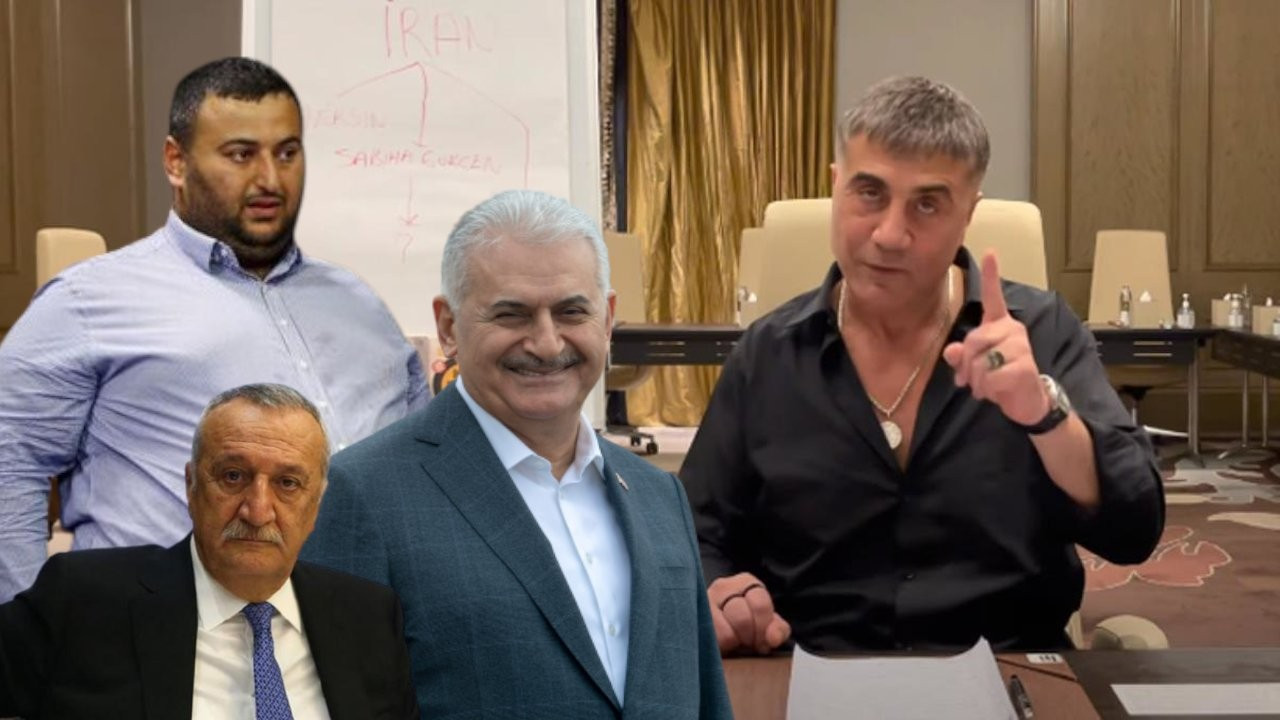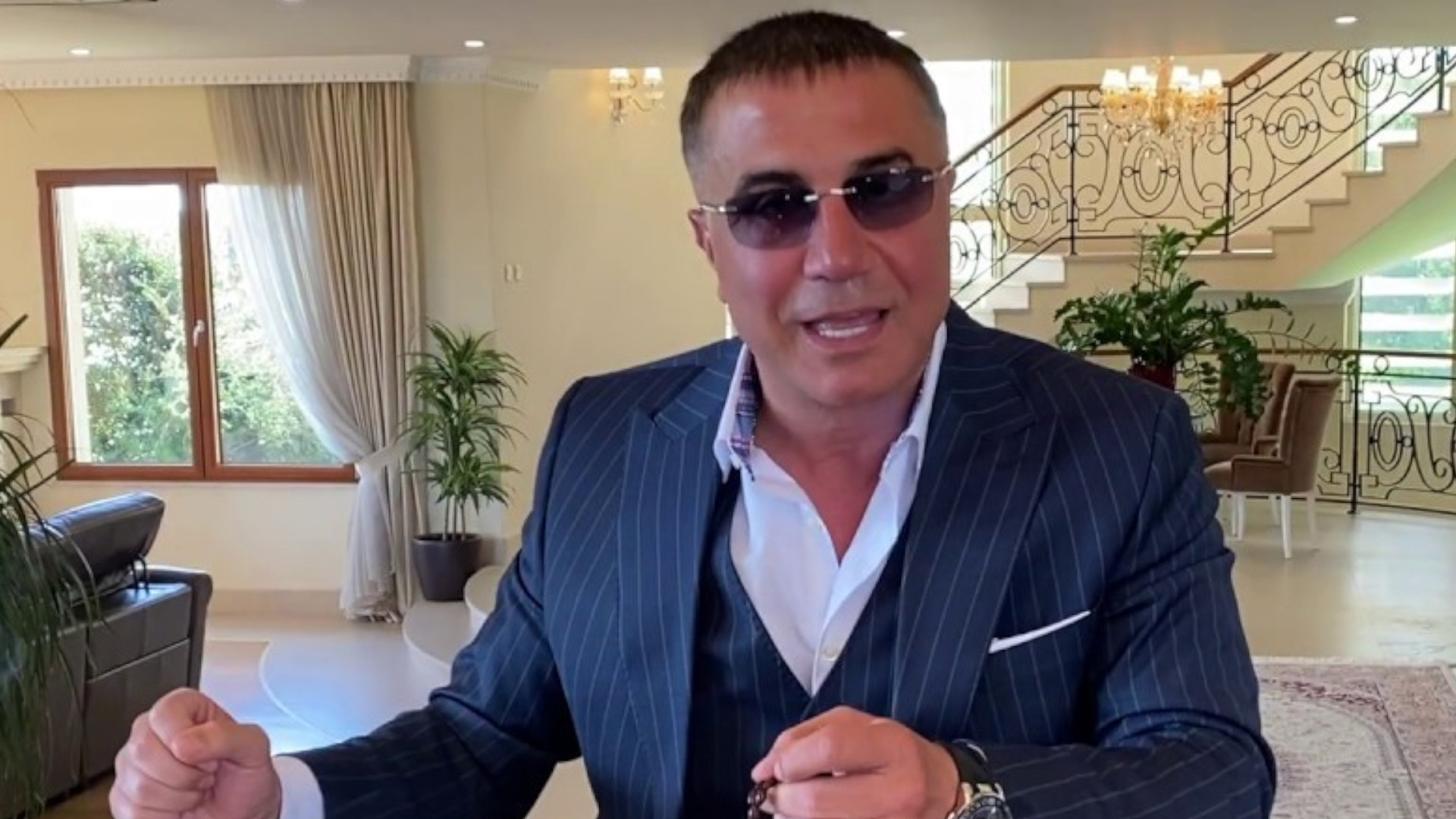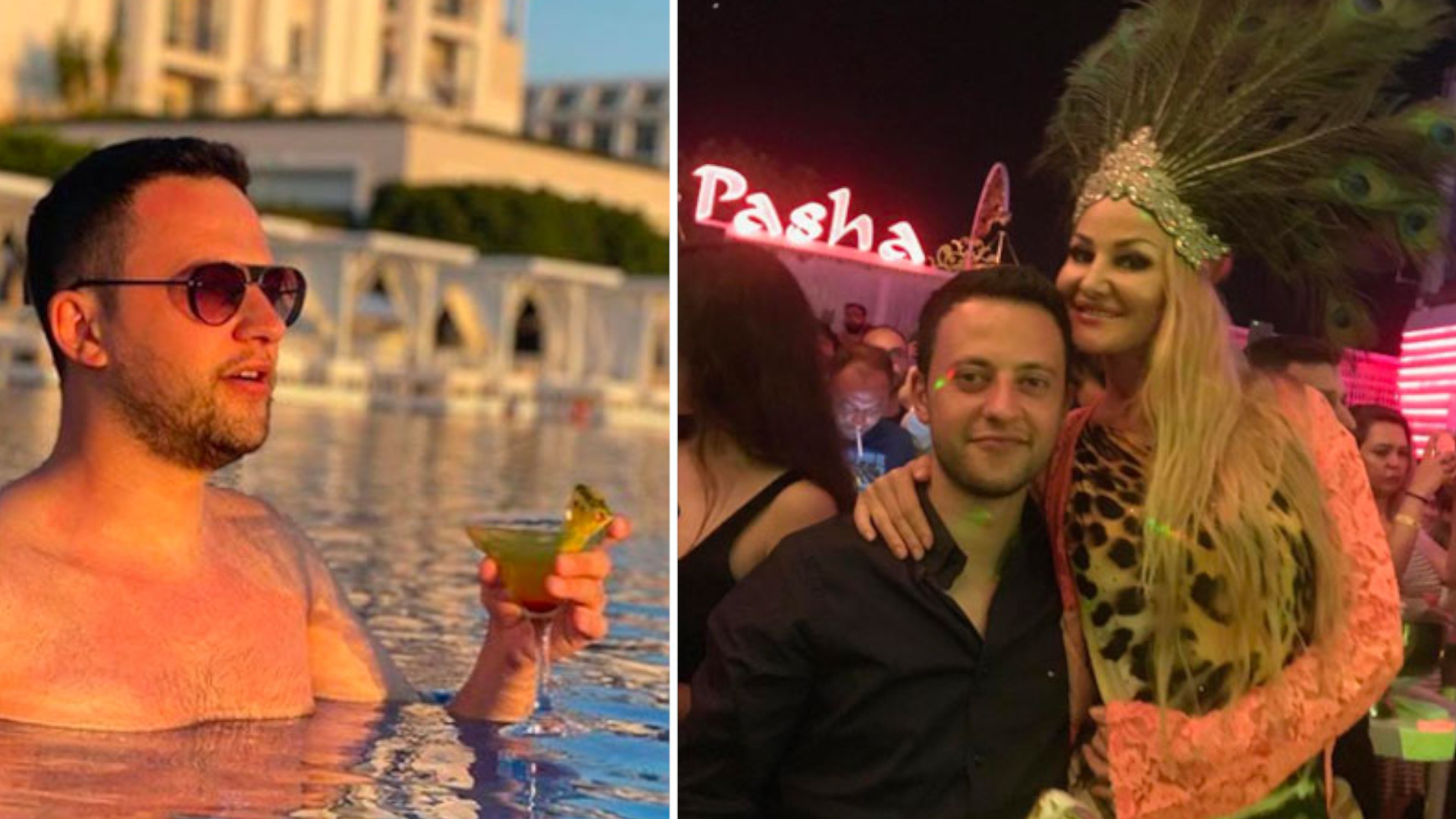Cocaine money threatens democracy, freedoms in Turkey
Cengiz Erdinç writes: Turkey was the destination of 4.9 tons of cocaine seized in Colombia last year. In the past three years, seizures in Europe rose to over 100 tons per year. In 2018, 131 tons of cocaine were caught in Europe, mainly in Belgium, the Netherlands, and Spain. Under this pressure, the route shifted to Turkish ports and to the ‘heroin route’ to Europe via Turkey. As the network grows, it threatens the economy, democracy and freedoms in Turkey.
Cengiz Erdinç
That Turkey was the destination of 4.9 tons of cocaine seized from a ship at Buenaventura port in Colombia on June 9, 2020 came as a surprise to the public. There were comments such as, “We knew we were a transit country for opium and heroin, but cocaine was hadn’t seen cocaine here yet.” Such statements are now supported by the recently posted videos of mafia leader Sedat Peker. However, the history of cocaine in Turkey goes back much further, and has been impacting the country for decades.
Cocaine was introduced to the market as medicine via chemical companies 150 years ago. Until it was banned in 1914, coca leaves were used in soft drinks.
Cocaine came to Turkey via white Russian aristocrats around 1920. It was common, during the Armistice period (1918 - 1922), that in Istanbul’s Göksü meadow and river, one could easily obtain a small white package for 1 lira from your local coffee shop. Better quality cocaine cost 5 liras. Reckless drivers would snort cocaine with Russian girls in their cars and speed down the roads along the Bosporus. People called it “Russian snuff.”
When morphine and heroin arrived, cocaine was largely forgotten. Until the 1990s, there were little to no users or smugglers in Istanbul.
Cocaine trafficking flourished in support of paramilitary forces against U.S. covert operations in South America. It was Pablo Escobar in the 1980s who made cocaine into an ‘industry.’ Total cocaine production in Latin America increased from around 200 tons in 1985 to more than 800 tons in 1991. Colombia gradually replaced Peru as the main cocaine producer. Escobar, who founded the Medellin cartel, nurtured the North American market. He cooperated with the Guadalajara cartel, founded by Miguel Angel Felix Gallardo, a former federal policeman nicknamed ‘El Padrino.’ Mexicans began smuggling Colombian cocaine into the U.S.
Escobar made a critical mistake during this process and paid for it via sharing ‘cocaine’ with the Mexicans cartels. Some 70-80 tons of drugs a month and 60 million dollars in daily earnings led to exponential growth. However, the U.S. market, which would later reach 30 billion dollars, increased its competition with Escobar. He was struggling with both the California cartel as well as the ever-increasing Mexican cartels. When he was killed in 1992, the Medellin cartel crashed and burned.
On the other side of the world, the heroin nightmare started as a financial solution offered by the Americans to the mullahs fighting the Russian invasion. It would later result in illegal opium, morphine, and heroin production in Afghanistan. It was the Iranians who transported the Afghan opium to the laboratories of the Pakistani Secret Service, which then turned it into heroin, and it was the Turks who distributed it within the European market.
The American Drug Enforcement Administration (DEA) began looking for new strategies with its 1.5-billion-dollar budget to curb the drug market which had reached 100 billion dollars in the U.S. in the 1990s. The DEA shifted its focused toward Afghanistan and Colombia. By crossing a few wires, Colombian cocaine and Afghan heroin met in Europe and was kept out of the U.S. market.
Wheels began to turn in the underground in 1987. Italian criminal clans headed to Eastern Europe thanks to the Russian mafia. When they withdrew from the heroin business, Turkish and Kurdish groups, along with Albanian and Serbian criminal organizations, tried to fill the void. The competition turned into a conflict and was moved to Turkey. The first shot was fired at Varujyan Kumdagezer’s boutique in 1988. Retaliations followed: Within the conflict, the far-right mafia was behind the trigger and big names began dropping like flies. By the beginning of 1994, 42 people involved in drug trafficking were killed. The number of Turks killed in the conflict in the Netherlands was 28.
Cocaine trafficking became apparent via a number of small incidents in Turkey. On July 31, 1995, 7 kilos of cocaine were seized at the Kapıkule border gate. Abuzer Uğurlu, a famous mafia leader, was arrested four years later. In 1997, 602 kilos of cocaine were seized in Mersin. A year later, another 756 kilos were seized on the Bahama flagged Silkeborg vessel in Mersin, coming from Chile. Among the 14 arrested, there was one Italian and one Chilean. That cocaine would have been smuggled to Europe and Russia via Istanbul in trucks.
Meanwhile, the public was distracted by media stereotypes of “drug lords being caught one after the other” and operations based on DEA intelligence. Some 3.1 tons of morphine base was sunk with the Kısmetim 1 vessel and 2.6 tons of morphine base was seized on the Lucky S vessel, but the real bosses and the public officials responsible were swept under the rug.
In 1994, Hüseyin Baybaşin, one of the lords of the heroin business, gave incredible statements. Some 27 years before Sedat Peker, he mentioned marinas, yachts, smuggling, and described relations with politicians, police chiefs, and high-ranking soldiers by giving dates and locations. However, Baybaşin’s statements were regarded as conspiracy theories.
The Turkish government’s official strategy of “draining the financial resources of the PKK” was accompanied by a series of murders starting with the killing of Behçet Cantürk in early 1994. Gangs within the state were engaged in kidnappings, murders, and ransoms in the name of ‘covert operations.’ This coincided with the conflict that began underground in 1988. The heroin that was not able to be smuggled to Europe was abundant in the domestic market. Both politicians and public officials shelved the issue on grounds that Turkey was ‘a transit country,’ but in 1996, 88 people died from heroin overdose in Turkey.
The ‘passage murders’ in the Netherlands, which began in 1993 and lasted until 2007, were a war within the drug market. Turkish and Kurdish organized crime groups were also in the cocaine business. Number one within the passage murders, was Dino Soerel, a former street fighter. His right-hand man, Ali Ekber Akgün, was a suspect in five different murders cases. His criminal record included the February 2007 murder of Nedim İmaç, the chair of the football club Türkiyemspor, with three bullets to the head in Amsterdam. Akgün was convicted of money laundering in the passage murders case. In December 2012, he was released pending trial and fled to Turkey. If he had stayed, he would have been sentenced based on the testimony of Fred Ros, the second confessor in the investigation. He was at odds with Dino Soerel. On December 24, 2014, he was killed by assailants who intercepted his car in İstinye, Istanbul.
The murder of Ertuğrul Yılmaz in Germany in 2003 was the beginning of a complicated series of incidents. Yılmaz was the partner of Atilla Önder. In 1997, he founded Doğuş Factoring with Murat Hakan Doğan, a close friend of Urfi Çetinkaya. He was involved in the murder of Banker Yalçın Doğan. He brought large amounts of money to Turkey and illegally marketed them. Alparslan Aslan, the gunman of the Council of State (Danıştay) murder, was also collecting money for Yılmaz’s company. Yilmaz was buried in Kadıköy, Istanbul in a large funeral ceremony organized by Sedat Peker’s men. Atilla Önder accused Ramazan Özarslan, known as the head of the Gang of Adıyaman, of having part in Ertuğrul Yılmaz’s death and claimed he had seized 15 million dollars in drug money. Thus, the clash between the groups of Hasan Derya Soy, who collaborated with Atilla Önder, and Ramazan Özarslan continued with more murders. In 2006, the police organized ‘Operation Nemrut’ for the Adıyaman gang, and in 2007, a ‘Last Point’ operation was carried out on Soy’s gang. This gang, accused of smuggling 55 kilos of heroin, was bringing together women and members of the judiciary at sex parties they called ‘the council.’
Atilla Önder had another partner, Aytaç Göraler, at the entertainment venue Sand. Göraler was killed in Amsterdam on Jan. 4, 2014. As suspects, Önder’s son, Barış Önder and Murat Garki were detained and released. Murat Garki was killed in Amsterdam on Dec. 10, 2014, and Barış Önder was killed five months later in Osdorp on April 25, 2015.
Reports linking Atilla Önder to the murder of Ali Ekber Akgün appeared in the media, but Önder denied them. He had complicated relationships with prosecutors and judges in the Netherlands, also with the underworld. He was known for hosting wild parties at nightclubs.
In 2017, another chain of murders began. What these attacks against Turks had in common was that the conflict originated from the ‘cocaine market’ and that the attackers intended to kill the victims. Murder investigations were neglected via racist tendencies.
2006 was a turning point in many respects. In Turkey, the law on “Prevention of Benefit-oriented Criminal Organizations” and the law on the “Prevention of Money Laundering” were removed via the introduction of the new Turkish Penal Code (TCK).
What happened was also associated with the other side of the Atlantic. In the ‘drug war’ that began in Mexico in 2006, the clash between states and the cartels upset the cocaine market. The cartels were also engaged in a power struggle among themselves. Annual cocaine production fell from 1,300 tons to 800 tons. The amount of cocaine captured rose to 700 tons. As the cartels in Colombia disintegrated and broke up into smaller ones, Mexicans and the Sinaloa cartel came to the forefront while the cocaine traffic headed toward Europe.
Under these circumstances, cocaine started to re-enter the Turkish market in 2010. That year, 300 kilos were seized. Cocaine with a purity of 53 percent was the highest rate of purity seized in any European country after Belgium, indicating the emergence of a new route. Stuck in Spain, the Netherlands, and Belgium, international smugglers were looking for new channels. More importantly, the production boost in Afghanistan piled up heroin, and smuggling profits fell significantly. Then, the Turkish mafia discovered cocaine and was in control of the Dutch-based European market. In the following nine years, the average amount of cocaine caught in Turkey reached 1.6 tons per year.
Worldwide production of cocaine increased to 1,600 tons in 2018. In the same year, 1,300 tons of cocaine were caught in the world. Within the strange mathematics of smuggling, while the cost of the amount of cocaine seized was $1.5 billion; the revenue from the smuggled 300 or 400 tons was estimated at $60 billion. In the past three years, seizures in Europe rose to over 100 tons per year. In 2018, 131 tons of cocaine were caught in Europe, mainly in Belgium, the Netherlands, and Spain. Under this pressure, the route shifted to Turkish ports and to the ‘heroin route’ to Europe via Turkey.
At the center of this complex story, operation ‘Swamp’ sits. The indictment of this case has not yet been written, although almost a year has elapsed.
This wildly liberal ‘swamp’ also indicates a ‘reset’ of relations that has been repeated throughout the history of the Republic of Turkey. Black money is feeding the collective monster of business, mafia, politics, and bureaucracy. As this resource grows and spreads to the entire economy and is covered up, it gains the power to threaten politics, the economy, democracy, citizens, and freedoms.

 Turkish mafia boss claims former PM's son, ex-minister part of int'l drug trafficking schemePolitics
Turkish mafia boss claims former PM's son, ex-minister part of int'l drug trafficking schemePolitics Caviar becomes cocaine in TurkeyWorld
Caviar becomes cocaine in TurkeyWorld The rise and fall of Turkey’s Young ErdoganistsWorld
The rise and fall of Turkey’s Young ErdoganistsWorld